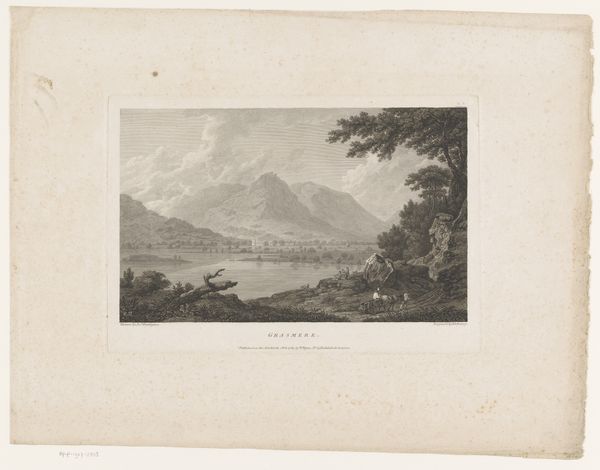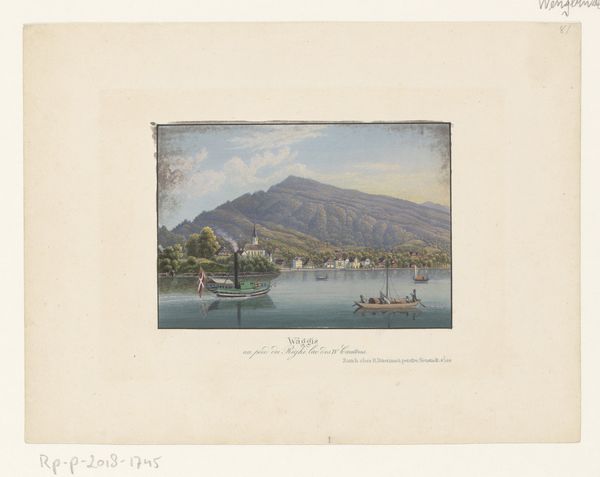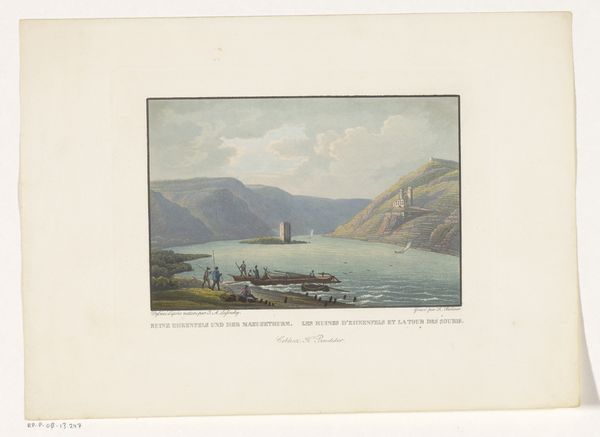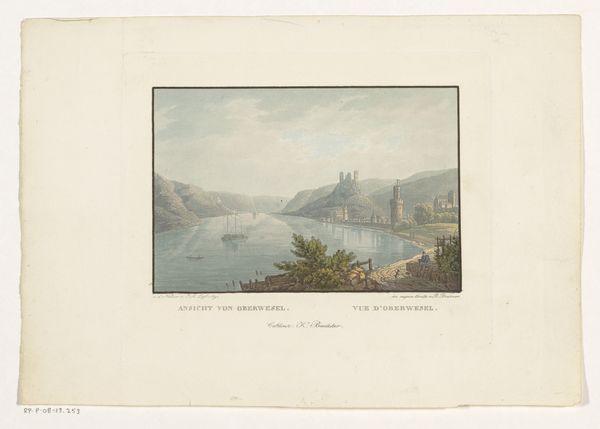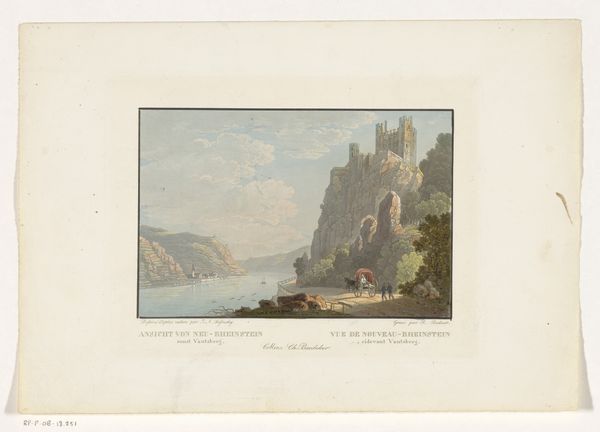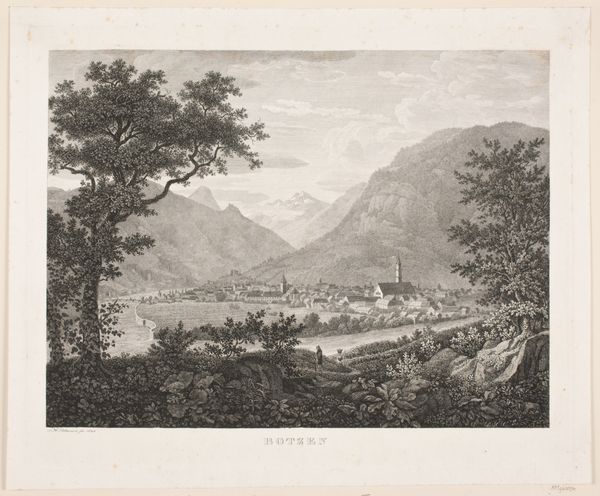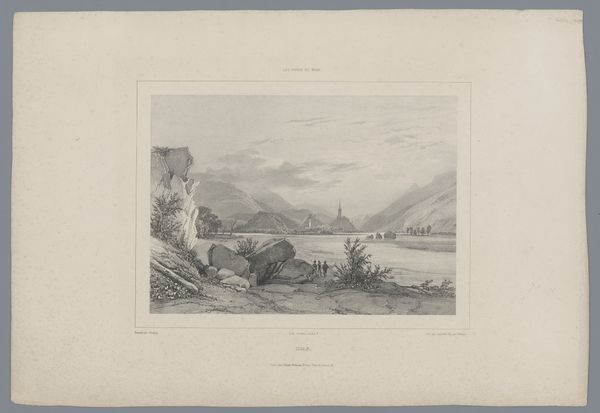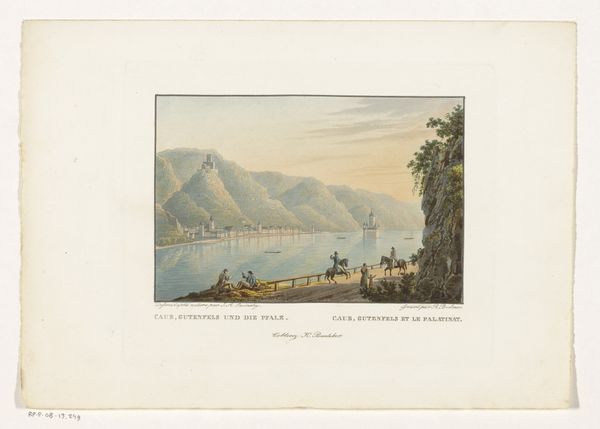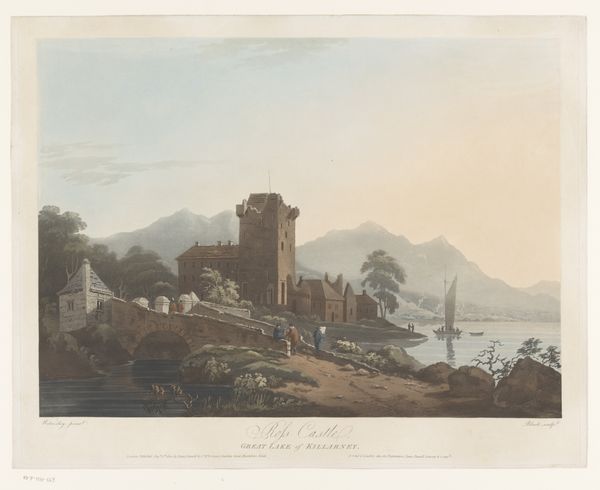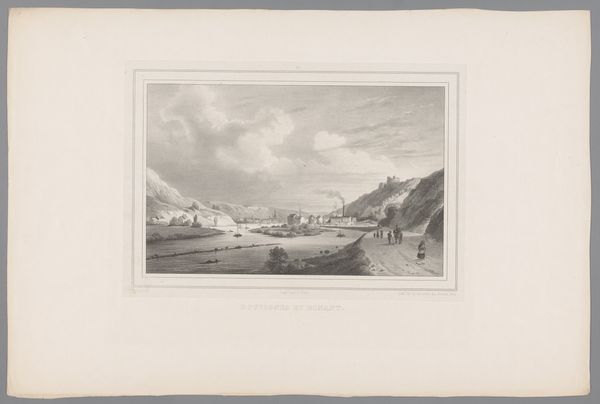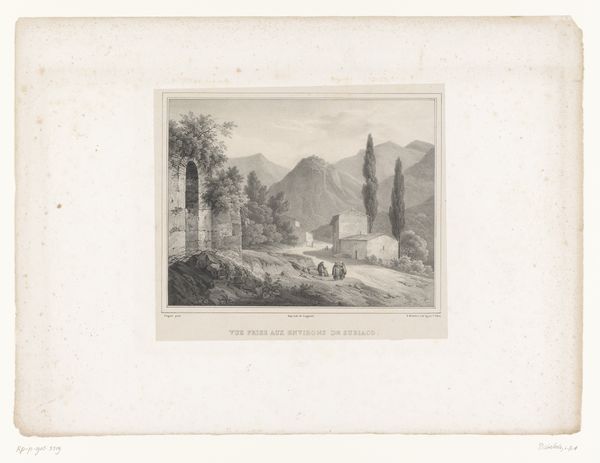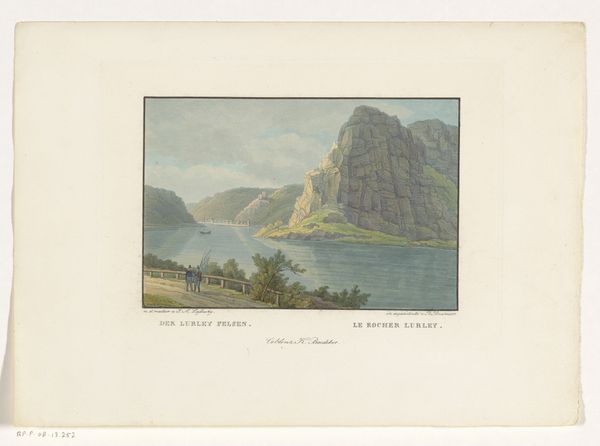
tempera, print, watercolor
#
lake
#
pastel soft colours
#
yellowing background
#
tempera
# print
#
landscape
#
perspective
#
watercolor
#
romanticism
#
line
#
cityscape
#
soft colour palette
Dimensions: height 108 mm, width 114 mm
Copyright: Rijks Museum: Open Domain
Curator: This is a 19th-century rendering entitled "Gezicht op het kasteel van Chillon," likely executed with tempera and watercolor on a print. Editor: The pastel tones immediately evoke a sense of tranquility; there’s a dreamlike quality to the overall composition and the way the lines define its architecture. Curator: Chillon Castle, situated on Lake Geneva, has always been a potent symbol. Its history as a prison, notably documented by Lord Byron's "The Prisoner of Chillon," renders this picturesque view a testament to political turbulence and resistance. What readings do you consider here? Editor: That dark past contrasts sharply with the softness of the image. Notice the gentle gradient of the sky, the careful balance between the solid mass of the castle and its ethereal reflection in the water; and how the perspective narrows in the background? Curator: Absolutely. Consider the figures on the left—are they simply aesthetic additions, or do they represent the gaze, perhaps the aspirations, of a rising bourgeoisie seeking connection to both nature and a romanticized past? And what might we suggest when we contemplate the symbolism of a prison for Switzerland during this time period? Editor: Symbolism is key. That lone sailboat mirrors the castle. Together, it establishes a diagonal thrust in the work—the sailboat moves us toward the architectural space, solidifying a tension between confinement and liberty. It subtly reinforces formal and thematic components in unison. Curator: I see your reading here and the boats as markers of progress and expansion, a shift away from feudal structures mirrored by the castle. The yellowing of the print adds another layer, evoking nostalgia, hinting at how historical narratives are perpetually mediated through time. Editor: Time shapes perception, literally here, as age impacts color, affecting the mood. The eye interprets the piece according to form, the composition according to social narratives. Curator: It becomes imperative to acknowledge this painting as both artifact and artwork, capable of revealing not only a landscape but also an ideological geography. The image invites introspection on the weight of history as mediated through our experiences. Editor: Precisely; structure meets subject, ultimately producing more than a pleasing tableau—revealing meaning that lies not merely in visual artistry, but beyond it.
Comments
No comments
Be the first to comment and join the conversation on the ultimate creative platform.
